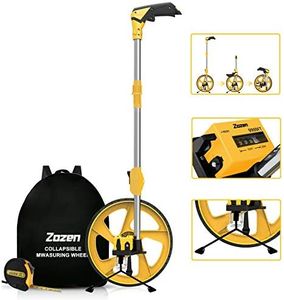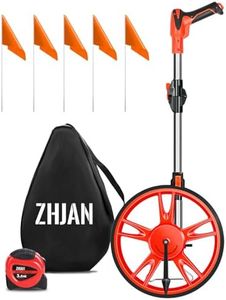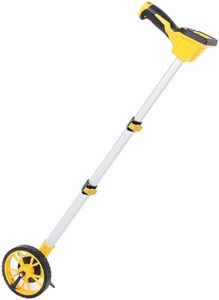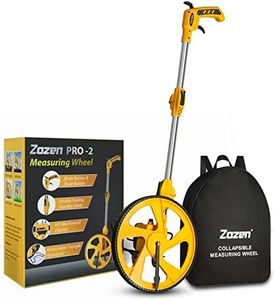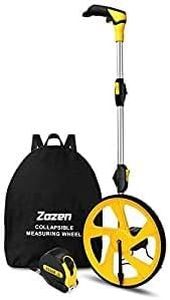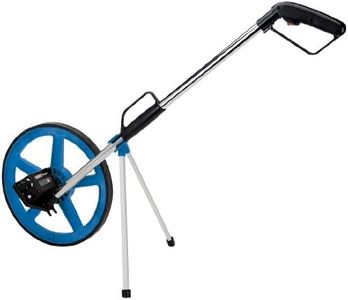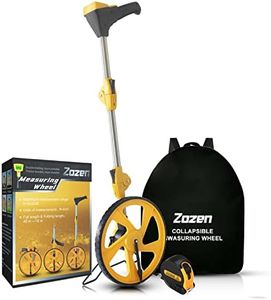We Use CookiesWe use cookies to enhance the security, performance,
functionality and for analytical and promotional activities. By continuing to browse this site you
are agreeing to our privacy policy
10 Best Measuring Wheels
From leading brands and best sellers available on the web.Buying Guide for the Best Measuring Wheels
Choosing the right measuring wheel can make measuring distances quick and efficient, whether you're working on a sports field, a construction site, or planning a garden. To pick the best measuring wheel for your needs, it's helpful to understand some key features and how they impact performance and usability. Identifying where and how you'll use the wheel—indoors, outdoors, on rough terrain, or smooth surfaces—will guide you to the right choice.Wheel SizeThe size of the measuring wheel refers to the diameter of the wheel itself, and this influences how well the wheel moves over different ground types and how easy it is to use in certain settings. Smaller wheels (usually 4-6 inches) are best for indoor use or smooth and flat surfaces, as they are lightweight and easy to maneuver in tight spaces. Mid-size wheels (8-12 inches) offer a good balance for mixed indoor and light outdoor use. Larger wheels (14 inches or more) are ideal for outdoor applications, especially over rough, uneven, or grassy terrain, because they can roll over obstacles more smoothly and maintain better accuracy. Choosing the right wheel size depends on where you'll use it most—smaller wheels for tight, clean spaces, and larger wheels for more rugged, outdoor areas.
Counter Type (Analog vs Digital)The counter on a measuring wheel displays the measured distance, and it can be either analog (mechanical dials) or digital (electronic display). Analog counters are simple, reliable, and don't require batteries, but may be harder to read quickly. Digital counters are easier to read and often offer additional features like memory storage or measurement unit conversion, but they require batteries and can be affected by moisture or impacts. If you value ease of reading and extra features, a digital counter could be better, but for basic, tough work, an analog counter offers simplicity and reliability.
Measurement UnitsMost measuring wheels display distance in feet, meters, or both. The right unit for you depends on the context in which you'll be measuring—if your work involves international standards or metric measurements, make sure the wheel can display meters. Some models allow you to switch between units, which is helpful for versatility. Always choose a wheel that reflects the units most relevant to your work or project.
Handle FeaturesThe handle design affects comfort and ease of use. Features like telescoping or adjustable handles allow the user to set a comfortable height for both short and tall users, and folding handles make the wheel easier to transport and store. Look for grips that are cushioned or ergonomically designed if you expect to use the measuring wheel frequently or over long distances. Picking the right handle comes down to how often and for how long you'll use the wheel and whether portability is important.
Durability and Build QualityThe materials used in a measuring wheel’s construction affect its longevity and suitability for certain environments. Wheels made from steel or reinforced plastic withstand rough use and outdoor conditions better, while lighter materials are suitable for clean, indoor jobs. If you anticipate using the w heel on job sites, gravel, or grass, prioritize a model with weather-resistant materials and solid build quality. For mostly indoor use, a lightweight, less rugged wheel may suffice.
Reset and Stop MechanismMost measuring wheels have a reset function to clear the counter back to zero, and sometimes a brake or stop mechanism to prevent the wheel from accidentally turning when not in use. Easy-to-access reset buttons improve workflow speed, while brake features help maintain measurement accuracy when stopping. Choose features based on how quickly and accurately you need to perform multiple measurements or prevent errors between measurements.
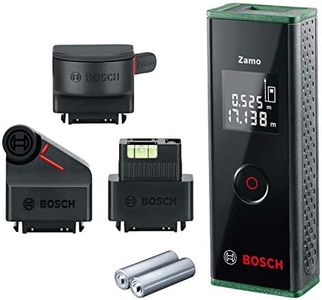
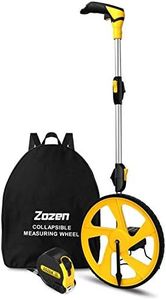
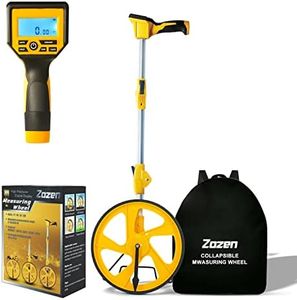

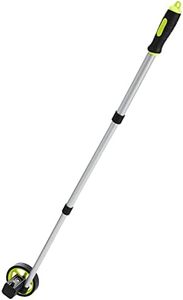
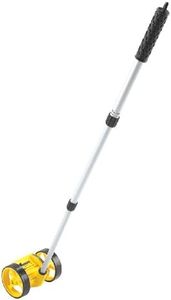
![Zozen Measuring wheel, Distance measuring wheel in feet, Wheel Measuring Tool, Rolling Measurement Wheel, Collapsible with Backpack [Up To 10,000Ft]|12’’ Diameter Wheel - Adapt to various roads.](https://images-proxy.bestreviews.guide/lBDIwqjQY3vB5qenkyzzidfnqmI=/0x300/https://m.media-amazon.com/images/I/31+gJd0xJpL._AC_CX679_.jpg)
